Credit card debt is a real problem for so many Canadians. With household debt at record highs—over $2.5 trillion—and credit card balances now topping $120 billion, it’s no wonder many people are struggling just to keep up.
If you’re only making minimum payments to your credit card balance, you could be stuck paying it off for years. For some, this can turn into decades.
If you feel stuck in a cycle of credit card debt and don’t know how to resolve it, you’re not alone. Thousands of Canadians are in the same boat.
Key takeaways
- Credit card debt is at a record high, with interest rates keeping people trapped in a cycle of minimum payments.
- There are ways out through budgeting and strategies like the debt avalanche or snowball methods.
- Balance transfers or debt consolidation can be effective for restructuring debt, but require good credit.
- If debt is out of control, consider non-profit credit counselling, a consumer proposal or bankruptcy.
- Avoid debt settlement traps and get free advice from a Licensed Insolvency Trustee.
Contents
Our problem with credit card debt
The numbers are stark. The average Canadian owes over $4,300 on credit cards, the highest since 2007. More than half of Canadians carry a balance every single month.
And the problem isn’t easing—credit card debt jumped between 6% and 14% in the past year alone.
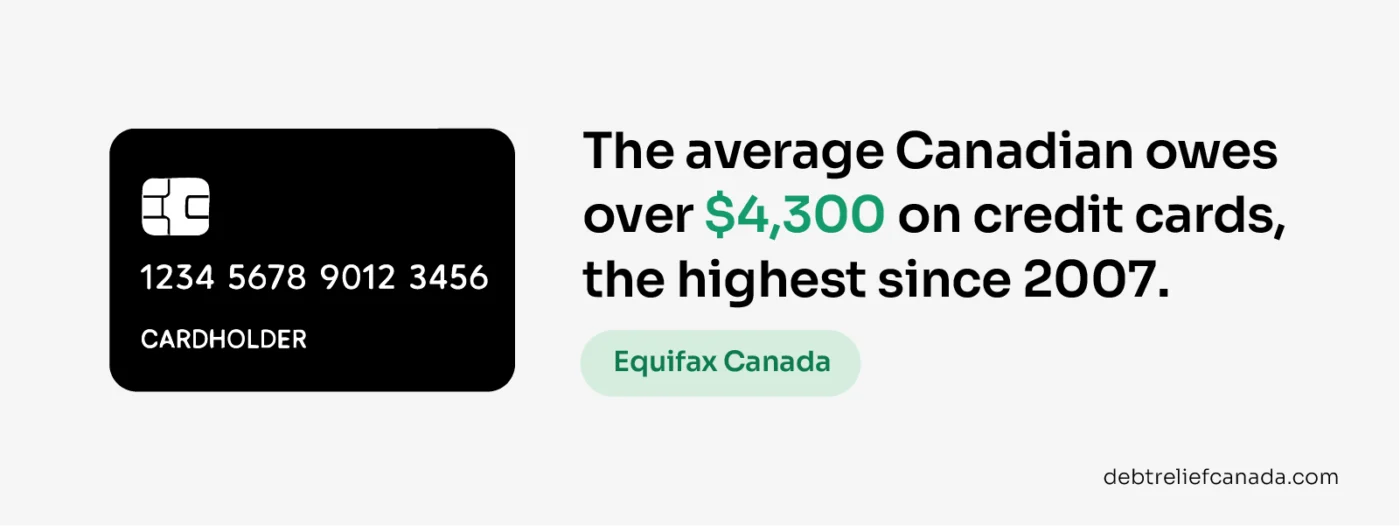
Credit cards are designed to keep you paying. With rates often between 20% and 30%, minimum payments mostly cover interest, not your balance. That’s why so many people never pay them off.
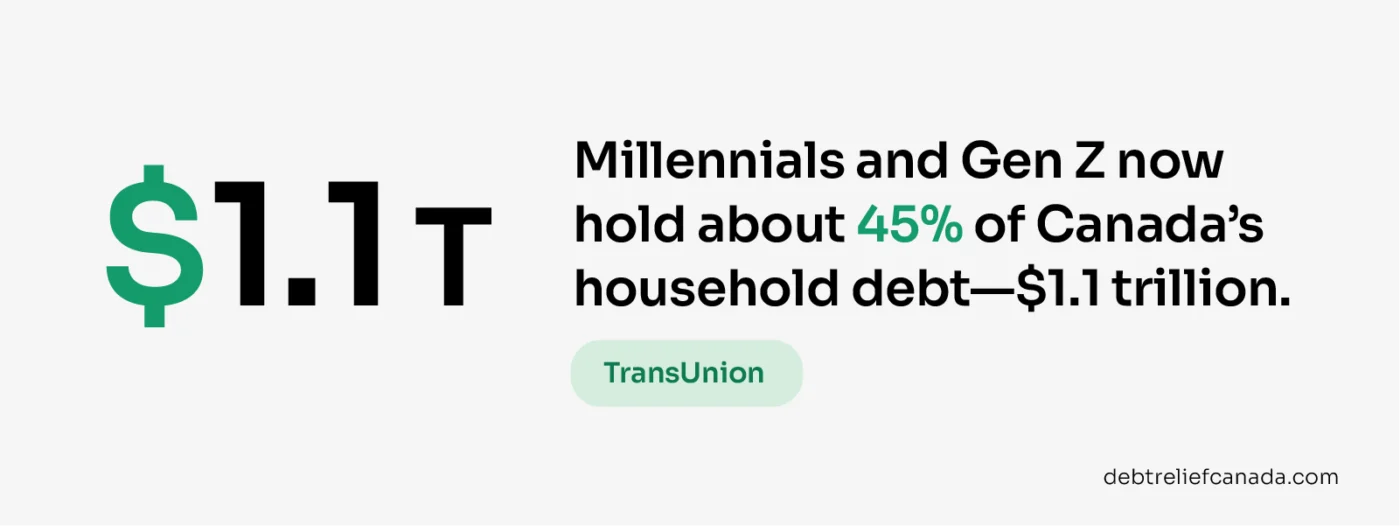
Millennials and Gen Z have seen the sharpest rise in credit use, with people aged 26 to 35 now posting the highest missed payment rate (2.24%).
Debt is now the leading source of stress in Canada, ahead of work, relationships or health. It affects sleep, puts pressure on families and makes daily life harder.
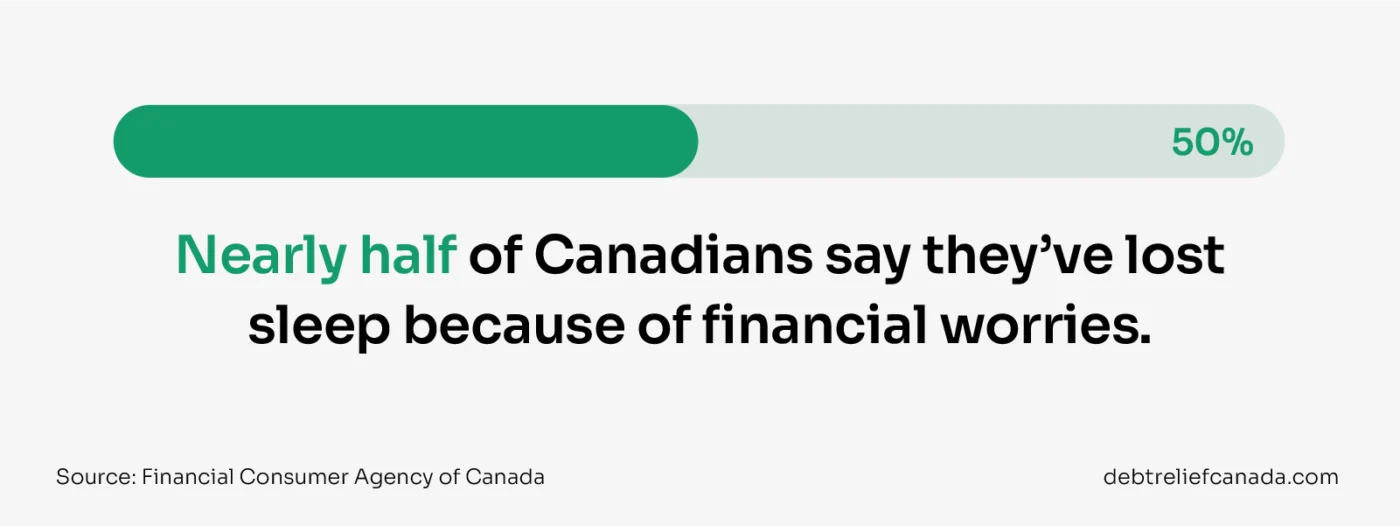
Do I need help with credit card debt?
You don’t need to be on the brink of bankruptcy to get help.
You may need debt relief if you:
- Only make minimum payments because money’s tight
- Use one credit card to pay off another
- Avoid checking your balance because it feels overwhelming
- Feel stressed, anxious or even guilty about your debt
- Want to finally make real progress instead of just treading water
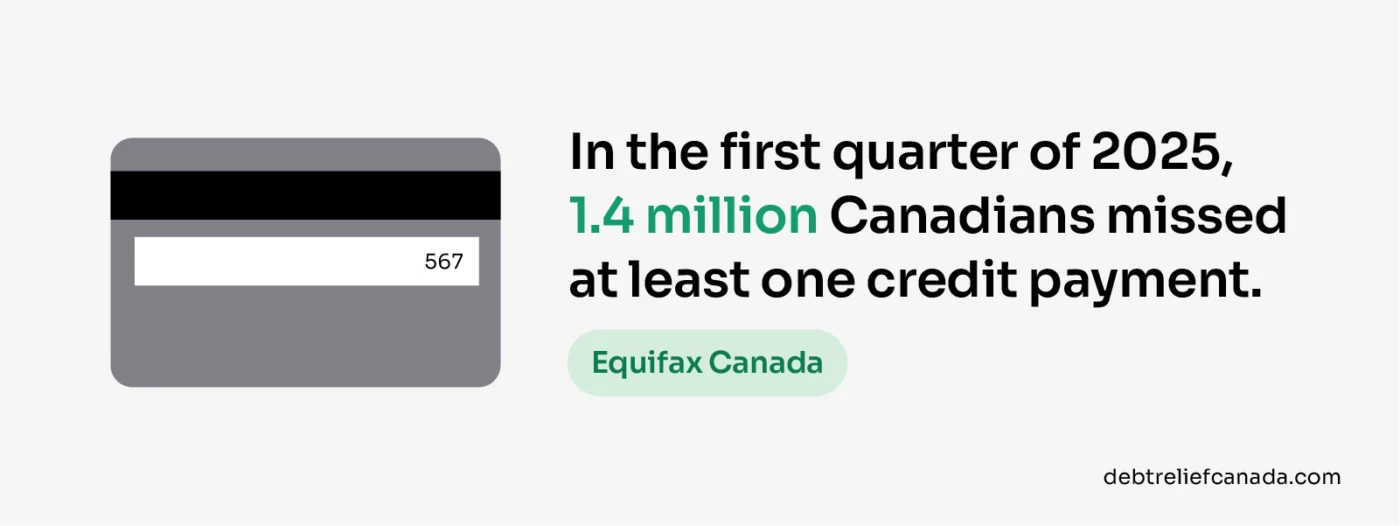
Your first steps to get out of credit card debt
1. Assess your financial situation
Don’t leave it to guesswork. Get the facts in front of you so you know exactly what you’re up against.
Make a list of any credit cards you’ve got, and check the following:
- What’s the balance?
- What’s the interest rate?
- What’s the minimum monthly payment?
- Are there any annual fees?
- What’s your credit limit, and how close are you to reaching it?
If you owe money to other debts like loan payments, payday loans, cash advances and lines of credit, list those as well. Write down the balance, interest rate, minimum payment, and any fees for each one.
Next, access your free credit reports from Equifax and TransUnion.
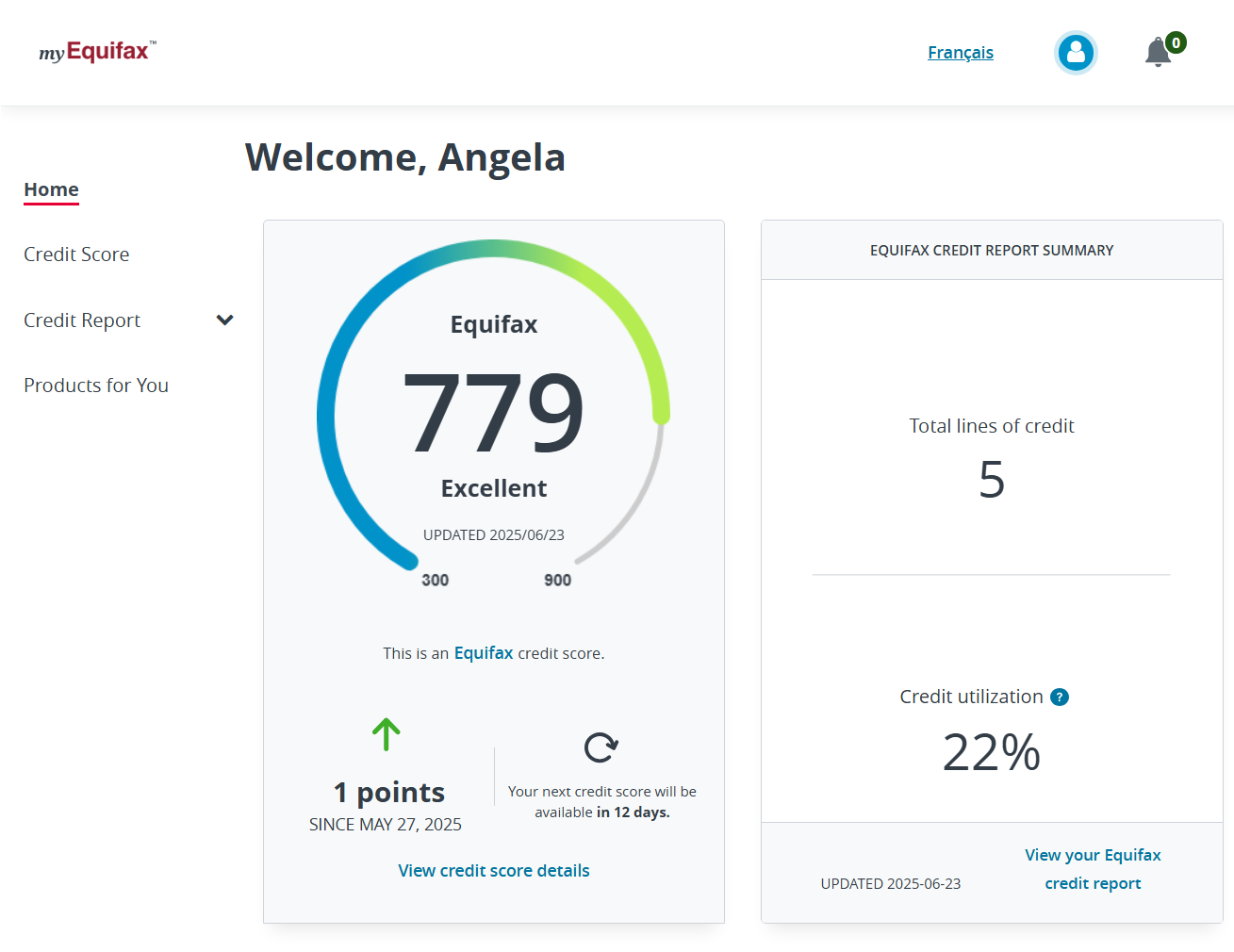
Pay attention to your credit utilization, which tells you how much of your available credit you’re using. This alone makes up about 30 percent of your credit score (the lower the credit utilization ratio, the better).
The more detail you have, the clearer your next steps will be.
2. Work out a budget
Now, check your budget and work out exactly how much you can realistically put toward your debt each month.
The 50/30/20 rule is a good place to start: 50% for essentials, 30% for wants, and 20% for debt payments and savings.
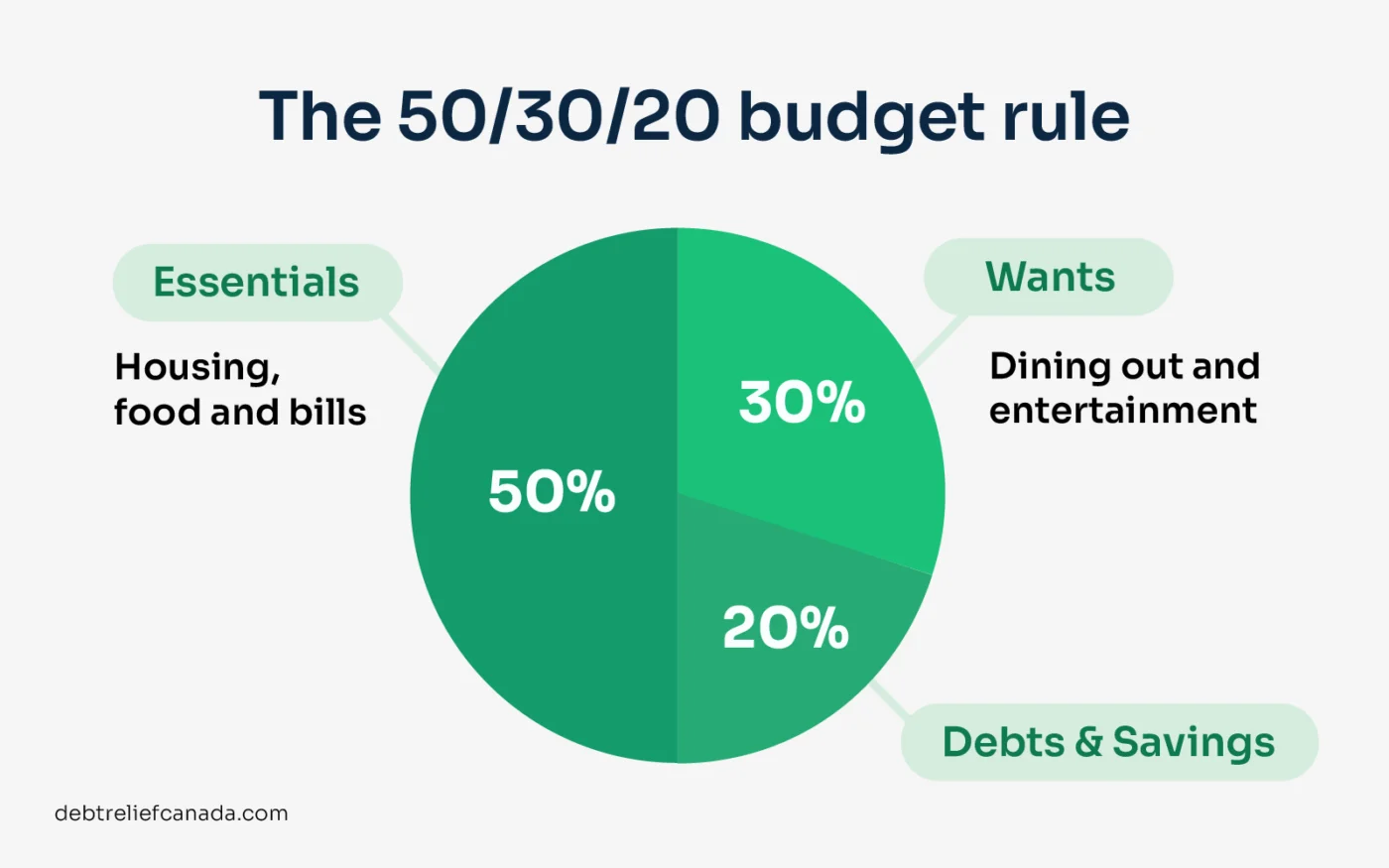
If you’re not putting anything toward debt payments and savings, it’s time to make a change.
Once you start budgeting, you’ll find it easier to cut back on non-essentials and free up cash to tackle your debt.
A budgeting app like Goodbudget can help you see exactly where your money’s going and spot the areas where you can cut back.
There’s only so much you can do with your budget, but if you want to clear your debt quickly, you have to nail the basics.
Simple changes can make a big difference. Bring your lunch and make your own coffee. Cancel unused subscriptions, negotiate your bills and try a no-spend month. Sell things you don’t use and put that money straight on your debts.
3. Automate your credit card repayments
It’s all too easy to forget bills and miss payments, especially when you’re juggling debts.
Setting up pre-authorized debits or recurring payments to your credit card company makes sure everything’s paid on time and avoids unnecessary extra costs.
Just keep an eye on your bank account and credit card statements. The credit card provider will take whatever’s due, so you need to check that the amounts are right and be careful if your income is unpredictable.
It’s also smart to add overdraft protection to your chequing account to avoid NSF fees, and set up balance alerts so you know when your balance is running low.
4. Break up with your credit card
Studies show we spend more when using credit than cash, mostly because there’s a delay between spending and paying, making it easier to ignore the true cost.
Credit card debt can sneak up on you and be tough to shift, so the best move is to stop using your cards altogether.
By cutting them out, you’ll start breaking the cycle, lower your balance on your credit cards and see your credit score improve as you do so.
Ways to get out of credit card debt
1. Debt avalanche method
To pay off your credit card debt faster and save on interest, use the debt avalanche method.
Focus on the debt with the highest interest rate first. Put all your extra money toward that one while making minimum payments on the rest.
When you’ve paid that debt, move to the next debt with the highest interest rate. Repeat this process until you have cleared your debts.
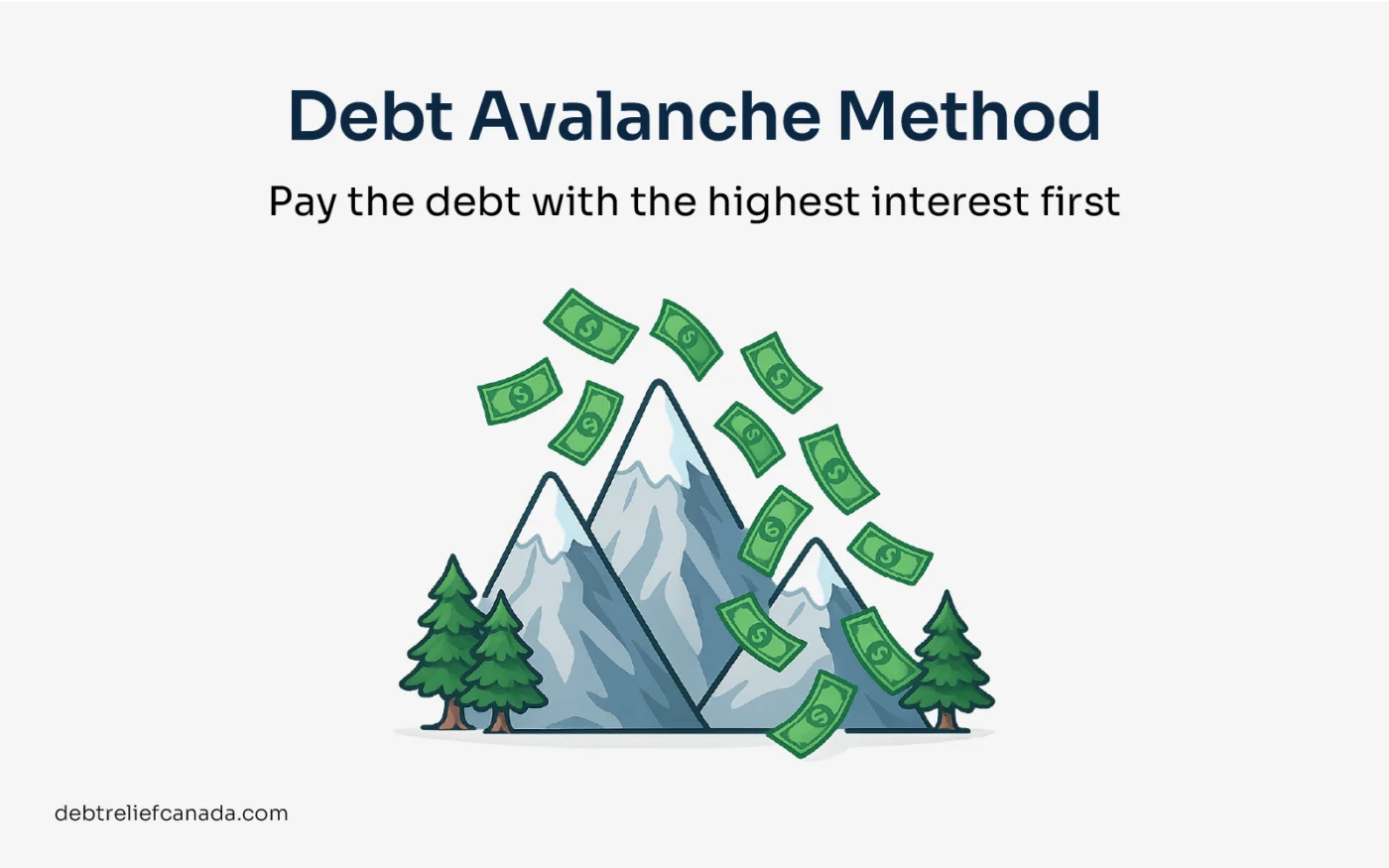
Advantages: By tackling your most expensive debt first, you’ll save the most on interest and clear your debts faster overall.
Disadvantages: You won’t see quick results, and if your highest interest debt is also your largest, progress can feel slow at the start.
2. Debt snowball method
If you’re struggling to find motivation, the debt snowball method could be just what you need.
Don’t worry about interest rates for now. Simply line up your debts from the smallest balance to the largest.
Attack the smallest debt first, throwing as much as you can at it while continuing to make the minimum credit card payments toward your other balances.
Once that first debt is cleared, roll the payment onto the next smallest, and keep going. It’s about building momentum and not losing steam.
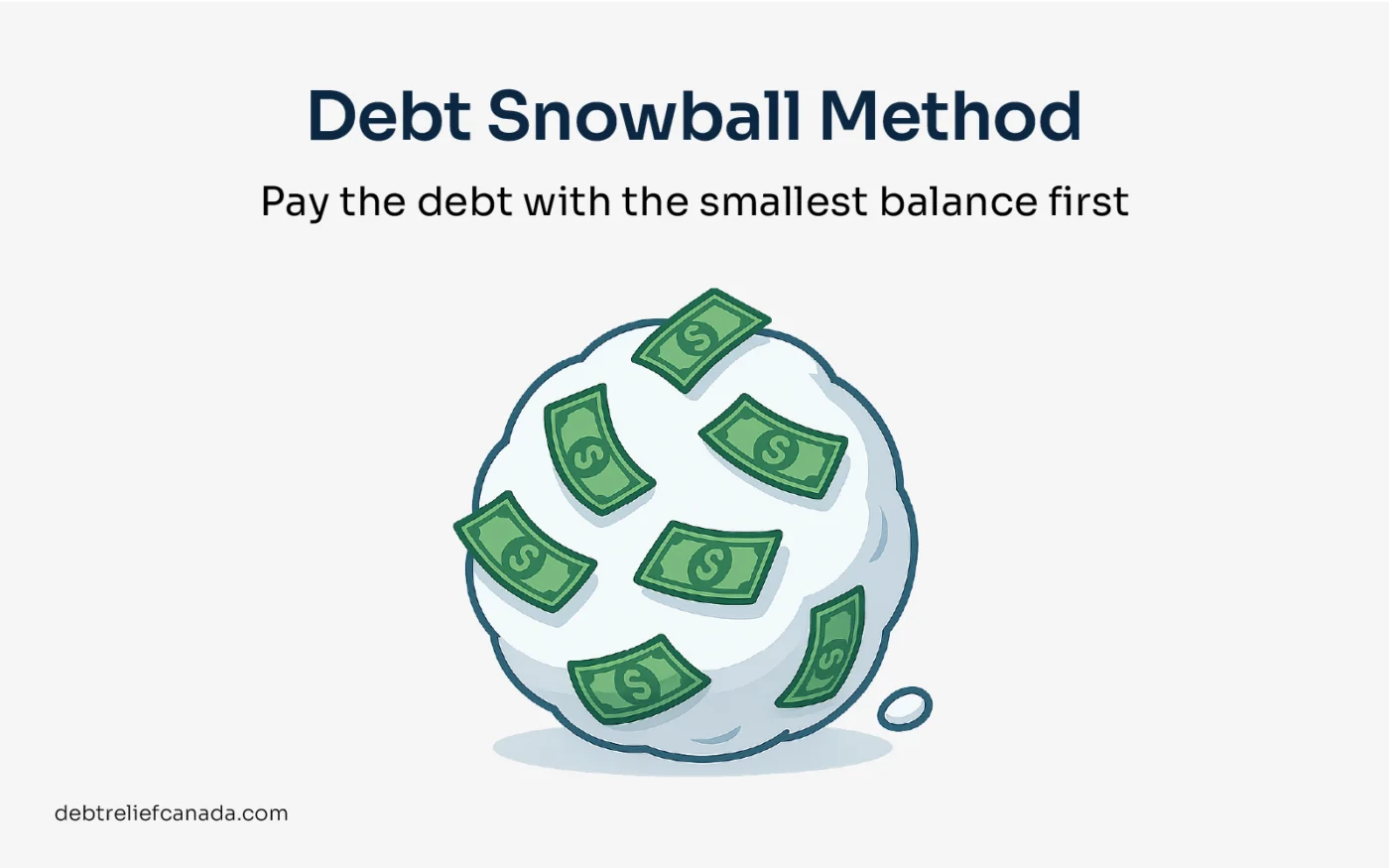
Advantages: You get quick wins, stay motivated, and see real progress, making it easier to keep going.
Disadvantages: Paying off smaller debts first can give you a quick boost, but you may pay more interest overall by not tackling your most expensive debt first.
3. Balance transfers
If you’ve got a good credit score (650+), a balance transfer card could help. All you do is move your high-interest debt to a new card with 0% or low interest for 6–12 months, allowing you to pay it down faster.
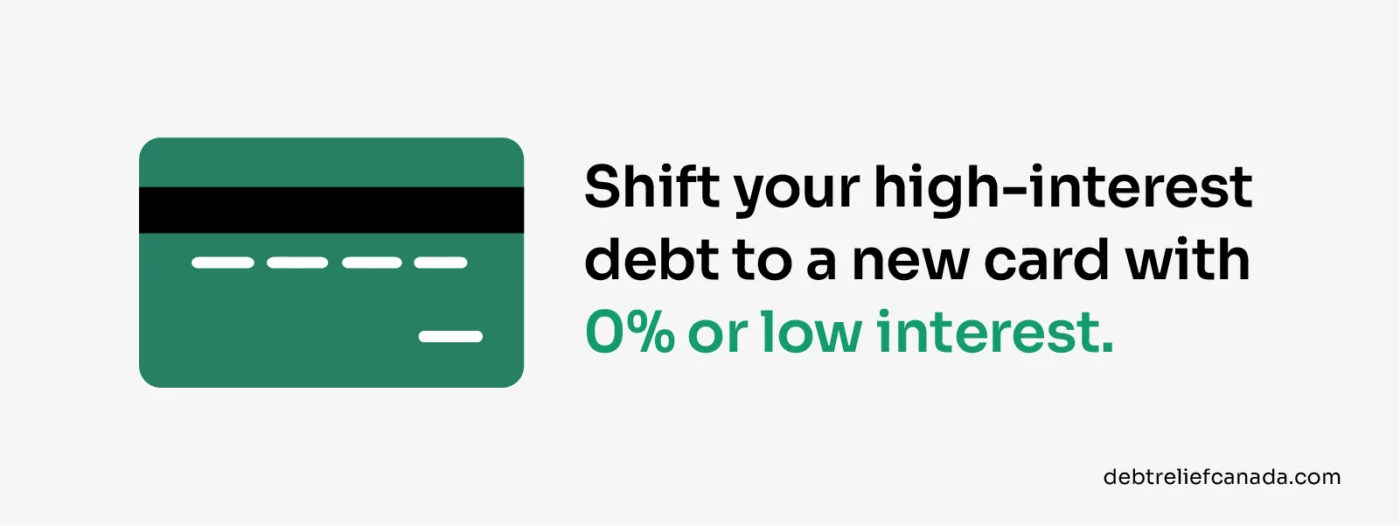
Only use the new card for paying down debt, watch for transfer fees, pay off as much as possible before the promo ends, and don’t use your old card again.
If there’s a promotional interest rate, check when it ends so you know how long you have to pay off the balance.
4. Debt consolidation loans
If you’re looking to get on top of your debt, a consolidation loan can help. Ideally, you’d take out a personal loan at 8 to 12 percent interest and use it to pay off your credit card debt.
When you consolidate debt this way, you’re left with just one payment at a lower rate and a set end date.

This can reduce your interest, lower payments and sometimes reduce what you pay each month. But it only works if you qualify for a lower rate, so good credit is a must.
You have to avoid racking up new balances, or you’ll land yourself in double the trouble. Bear in mind that if you use a secured loan like a HELOC and miss a payment, your home is at risk.
5. Non-profit credit counselling
If you’re struggling with debt, a credit counselling agency can help.
You can get credit counselling from both non-profit and for-profit companies, but always use an accredited, certified non-profit credit counsellor for genuine, unbiased help.
Your first meeting with a certified counsellor is usually free, where you’ll get debt advice tailored to your situation.

If you go ahead, the counsellor attempts to negotiate with your creditors to reduce or freeze your interest rates, and you make just one monthly payment to the agency. They handle the rest.
Typically, a credit counsellor recommends a debt management plan, which is a repayment plan paid for up to three years. Under this plan, you make monthly payments to the credit counselling agency.
You might have to pay a set-up fee and a monthly fee, especially with a debt management program, but the savings on interest usually make it worthwhile.
This approach is ideal if your credit’s taken a hit, but you can manage regular payments and want help staying on track.
6. Consumer proposal
If your debt is out of control, a consumer proposal might be the answer.
A consumer proposal is a legally binding agreement, set up by a Licensed Insolvency Trustee, that lets you pay back a portion of your unsecured debt while the rest of the debt is forgiven.
You combine your debts into one affordable monthly payment, with no more interest, collection calls or wage garnishments. You keep your assets, like your home and car.
You can reduce your debt by up to 80%. The cost is based on your income, how much you owe, and what you can afford to pay.
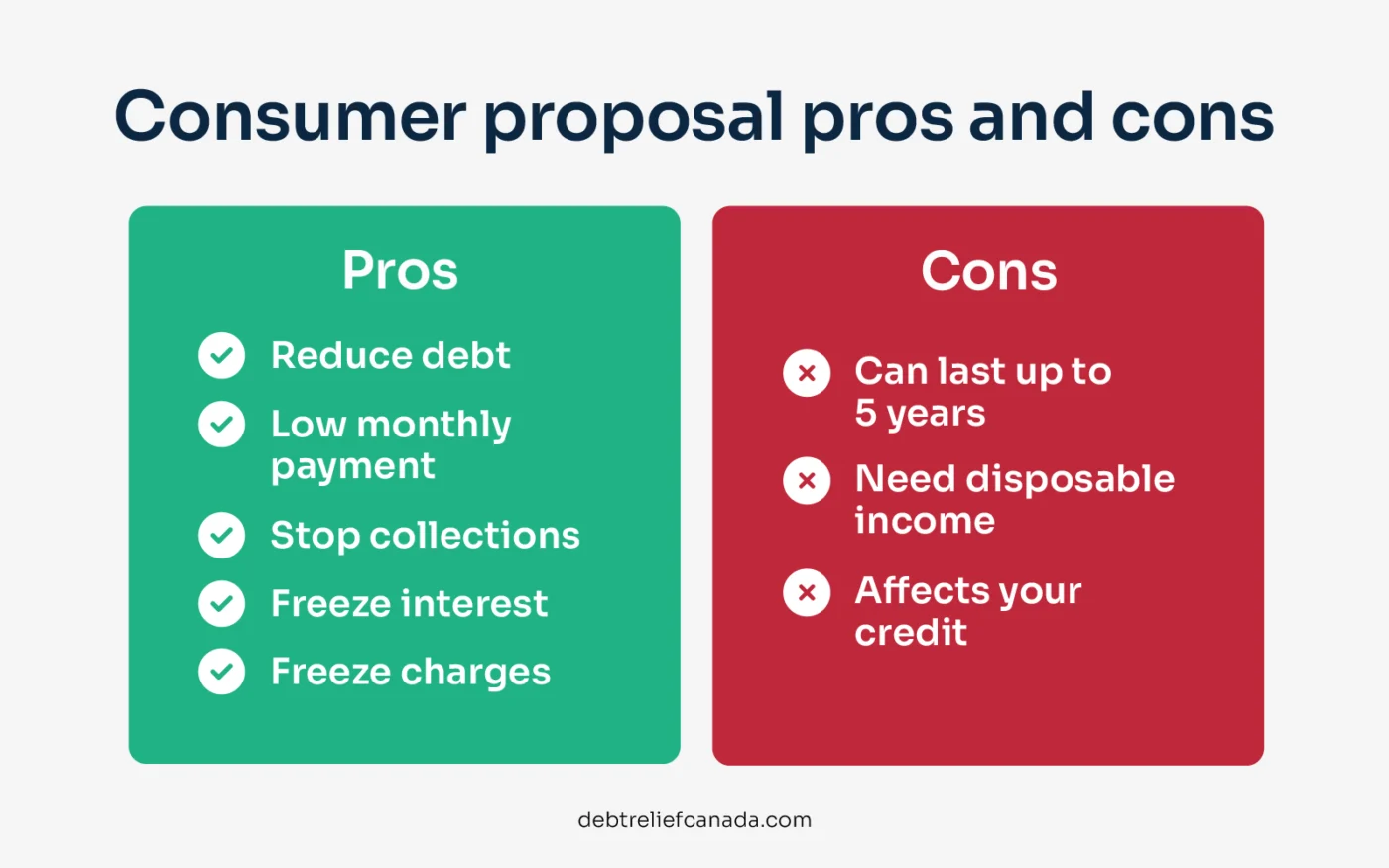
Your credit rating takes a hit, but that’s far less damaging than bankruptcy, and you keep your assets.
Learn more about a consumer proposal
Erase up to 80% of your debt, then pay one low monthly bill.
- Reduce debt by up to 80%
- Stop collection calls
- Lift wage garnishments
- End all legal action
- Freeze interest + charges
7. Bankruptcy
Personal bankruptcy is a legal process under the Bankruptcy and Insolvency Act where you give up some assets to get help with debts you can’t manage.
Most people don’t end up here by choice—it’s often the last option for those who can’t repay what they owe.
Once you declare bankruptcy, you pay what you can afford, and some assets may be sold to pay your creditors.
You’re legally protected from creditors, interest is frozen, and collection action stops.
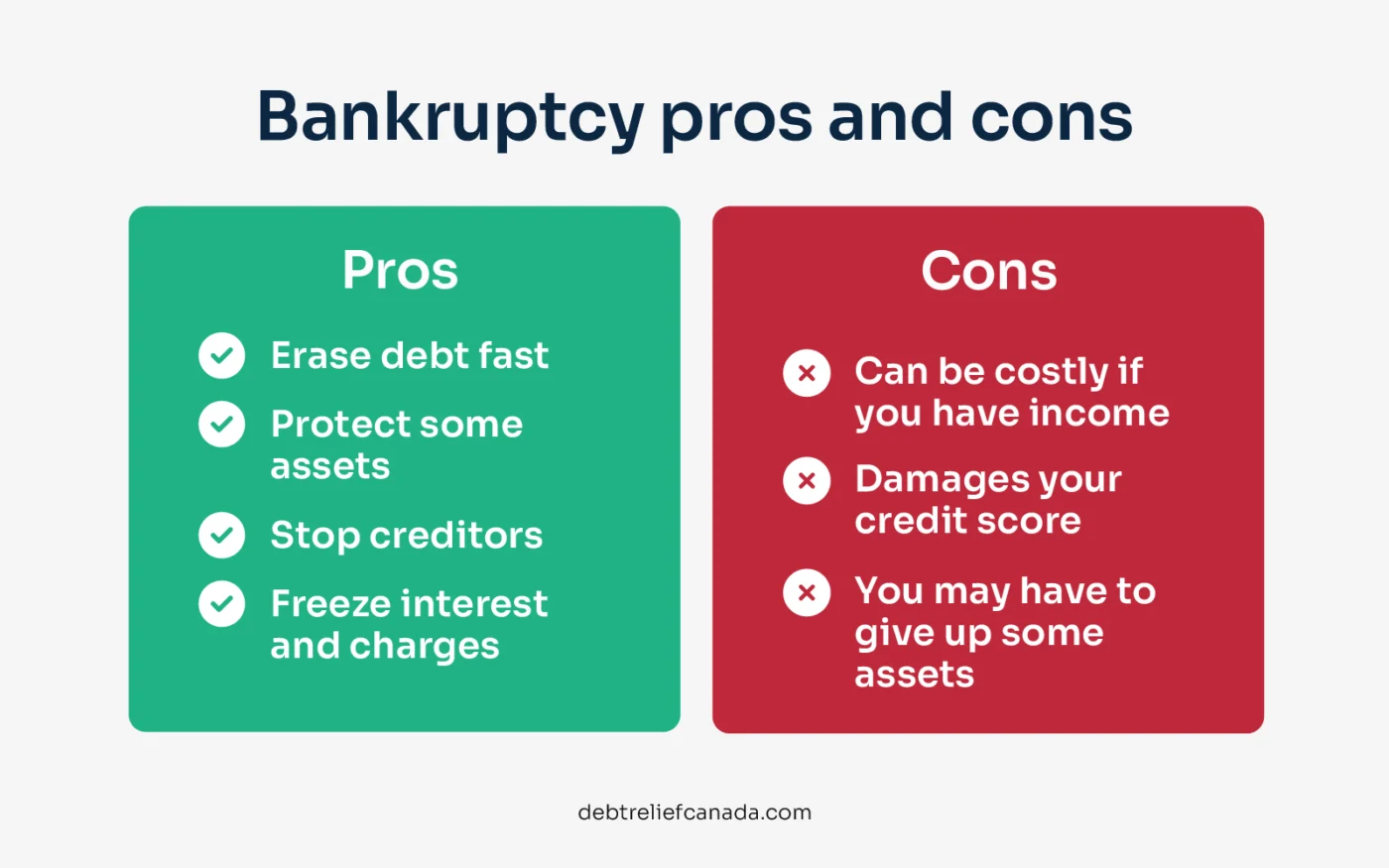
When the process is done, sometimes in as little as nine months, your remaining unsecured debts are wiped out.
8. Debt settlement
Debt settlement means hiring a company to negotiate with your creditors so you can pay a lump sum that’s less than what you owe.
There are big catches: creditors don’t have to accept the deal, and you’ll pay an upfront fee to the settlement company either way.

The process can take months, and if you stop payments while they negotiate, your credit score can drop.
Debt settlement companies often make promises they can’t keep and cannot stop wage garnishments, legal actions or collection calls.
Beware of debt settlement companies
Don’t use debt settlement programs to file a consumer proposal or bankruptcy. These companies aren’t qualified and have no power to do so.
Only a Licensed Insolvency Trustee can give you real creditor protection in Canada through a consumer proposal or bankruptcy.
Get out of debt faster with expert help
If you’re juggling cards to pay each other, if debt payments take up over 40% of your income, if you’re missing payments, getting collection calls, or if debt stress is hurting your health or relationships, it’s time to talk to a Licensed Insolvency Trustee.
What to do after paying off credit card debt
Getting out of credit card debt is a huge win, but staying debt free means keeping up the effort and sticking to good habits.
Start by setting up an emergency fund, even if it’s just $1,000. This safety net helps you cover unexpected expenses without turning to credit.
Keep an eye on your budget every few months and cut out the spending habits that led to credit card debt in the first place.
As you pay off your debts, start putting that money into savings or towards your future goals.
With better habits, a clear plan, and some focus, you’ll avoid falling back into debt and give yourself the best possible chance of a brighter financial future.
If you’re struggling to make your debt repayments, take advantage of a free consultation with a Licensed Insolvency Trustee today.
